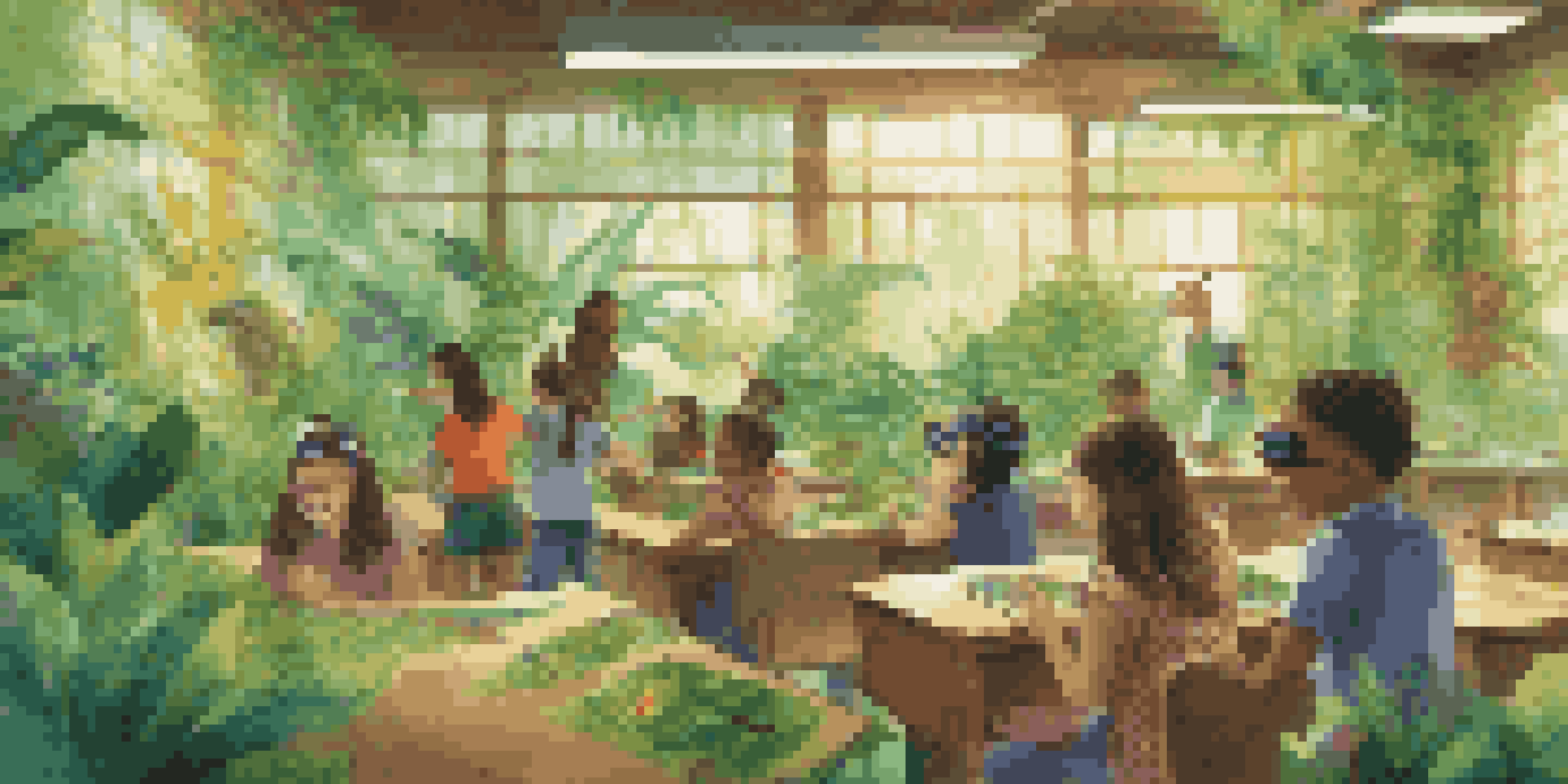AR in Environmental Education: Promoting Sustainability

Understanding Augmented Reality in Education
Augmented Reality (AR) refers to the technology that overlays digital content onto the real world, enhancing our perception of our environment. In educational settings, it can transform traditional learning methods by making lessons more interactive and engaging. Imagine students exploring a virtual rainforest right in their classroom, seeing how ecosystems function. This immersive experience can spark curiosity and deepen understanding, especially in complex topics like environmental science.
The Role of AR in Promoting Sustainability
AR can play a pivotal role in promoting sustainability by visualizing environmental issues in real-time. For instance, students can use AR apps to see the effects of pollution on local wildlife or how deforestation impacts carbon levels. This visual representation makes the consequences of our actions more tangible, fostering a sense of responsibility. By connecting emotionally with these issues, learners are more likely to adopt sustainable practices in their daily lives.
AR Transforms Learning Experiences
Augmented Reality enhances education by making lessons interactive, allowing students to explore complex topics in immersive ways.
Engaging Students with Interactive Learning
One of the greatest strengths of AR is its ability to engage students in interactive learning experiences. Instead of passively reading about environmental challenges, learners can actively participate in simulations that illustrate the importance of biodiversity or the water cycle. For instance, an AR app could let students 'plant' virtual trees and see their growth over time, emphasizing conservation efforts. This hands-on approach not only boosts retention but also cultivates a proactive mindset toward environmental stewardship.
Encouraging Field-Based Learning with AR
AR technology can enhance field trips by providing additional layers of information during outdoor learning experiences. Imagine a class visiting a national park and using AR glasses to identify plant species or view historical data about the area’s ecosystem. This enriched experience transforms a simple walk into a dynamic learning opportunity, making the environment come alive. Such immersive learning fosters a deeper appreciation for nature, encouraging students to engage with their surroundings more thoughtfully.
Promoting Sustainability Awareness
AR visualizes environmental issues, fostering a deeper emotional connection that encourages students to adopt sustainable practices.
Collaborative Learning Through AR Experiences
AR can also facilitate collaborative learning, where students work together on projects that address environmental challenges. For example, they might use AR to create a virtual presentation on local wildlife conservation efforts, merging creativity with educational content. This teamwork not only enhances social skills but also reinforces the idea that solving environmental issues requires collective effort. By collaborating, students learn to value diverse perspectives and solutions in sustainability.
AR's Impact on Teacher Engagement and Training
Teachers play a crucial role in the success of AR in education, and their engagement is vital. With proper training, educators can effectively integrate AR into their curriculum, enhancing lesson plans with innovative tools. Workshops and resources focused on AR technologies can empower teachers to create captivating lessons that resonate with students. When educators are excited about the tools they use, that enthusiasm often translates into the classroom, inspiring students to learn about sustainability.
Collaborative Learning Opportunities
AR facilitates teamwork among students, enabling them to address environmental challenges creatively and collaboratively.
Measuring the Effectiveness of AR in Education
To ensure that AR is making a positive impact on environmental education, measuring its effectiveness is essential. Educators can collect feedback from students on their experiences and assess changes in knowledge retention and attitudes towards sustainability. Moreover, case studies and research can provide insights into best practices and potential improvements. By evaluating these metrics, schools can continuously refine their approach to using AR, maximizing its benefits in promoting environmental awareness.
The Future of AR in Environmental Education
As technology advances, the future of AR in environmental education looks promising. With ongoing innovations, we can expect even more sophisticated applications that further enhance learning experiences. Imagine AR that not only visualizes data but also predicts future environmental scenarios based on current trends. By continuing to integrate AR into educational frameworks, we can inspire the next generation to be proactive stewards of the planet, equipped with the knowledge and tools to champion sustainability.